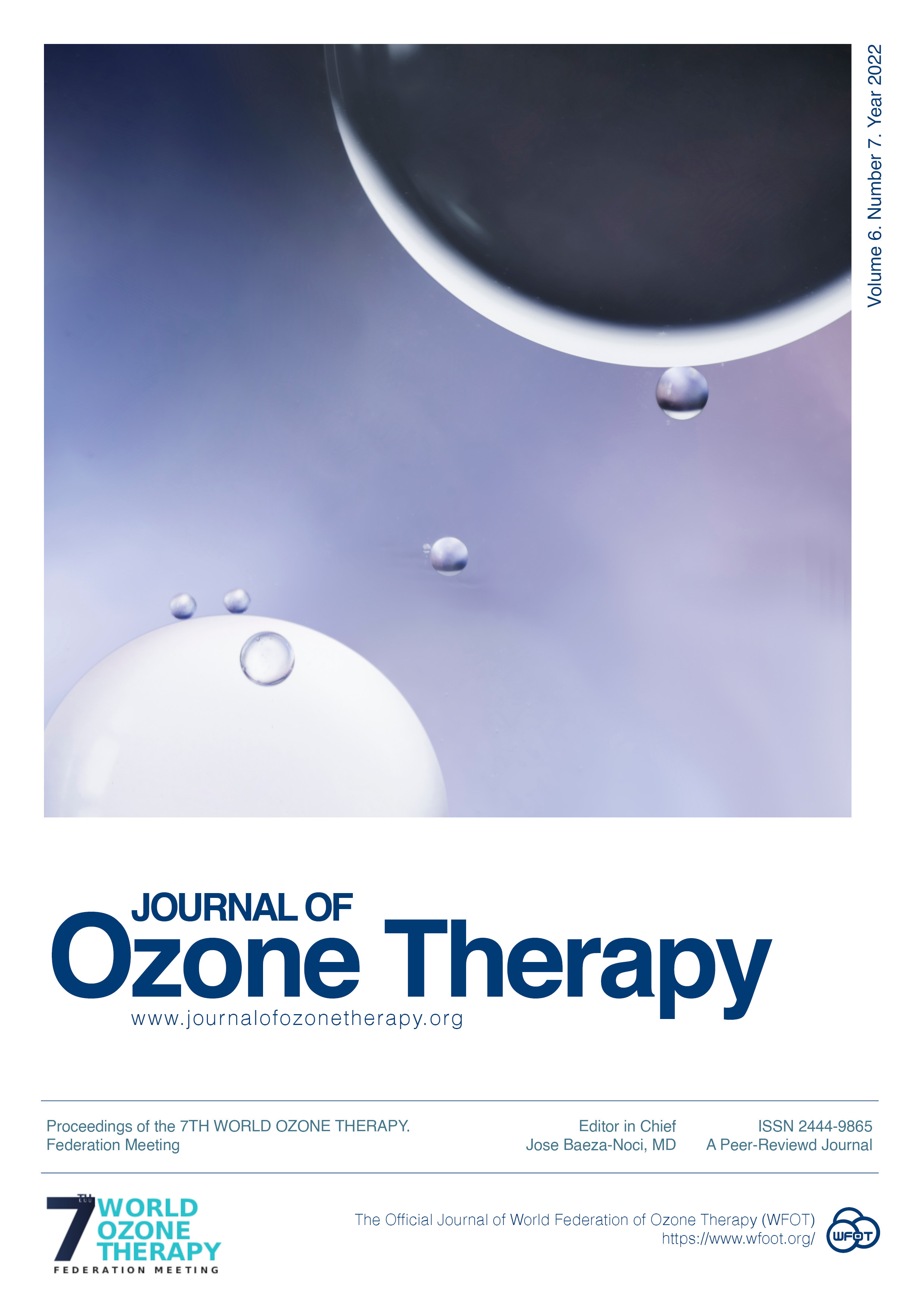Ozonucleolysis in cervical radiculopathy – Pakistan experience.
DOI:
https://doi.org/10.7203/jo3t.6.7.2022.25977Palavras-chave:
medical ozone, cervical hisc hernia, pain medicine Resumo
Resumo
BACKGROUND AND PURPOSE
Direct injection of Oxygen-Ozone in the cervical discs has proved to be the effective alternative to surgery in patients with cervical disc herniation in many countries around the world. We report our experience with ozonucleolysis with patients effected by pain incervical region (brachialgia)due to disc herniation including post-operative recurrence or disc prolapse.
METHODS
6000 patients were treated with single session of Oxygen-Ozone therapy from 2005-2020. All the patients had CT or MRI evidence of cervical disc prolapse with clinical signs of cervical nerve root compression. The procedure was performed under angiofluoroscopy using 22/23 G spinal needle without anesthesia. All the patients received intradiscal injection n of Oxygen-Ozone mixture at Ozone concentration of 30 µgm/ml. Among these patients 4500 were males and 1500 were females between the ages of 20-70 years. Therapeutic outcome was assessed 8 week after treatment by using modified MacNab method.
RESULTS
A satisfactory therapeutic outcome was obtained. 60% of the patients showed complete recovery with resolution of symptoms. 20% of the patients complained of occasional episodic neck pain and arms pain with no limitation of occupational activity. 5% of cases showed some improvement. 5% of cases had insufficient or noimprovement and went for surgery. 10% of cases never turned up after the first visit.
CONCLUSION
Intradiscal injection of Ozone for herniated cervical disc has revolutionized percutaneous approach to nerve root diseases making it safer, cheaper and easier to repeat than treatments currently in use.
 Downloads
Downloads
Downloads
Publicado
Como Citar
-
Resumo318
-
PDF 165
Edição
Secção
Licença
Journal of Ozone Therapy applies the Creative Commons Attribution-NonCommercial 4.0 International License (CC BY NC 4.0) license to works we publish.
Under this license, authors retain ownership of the copyright for their content, but allow anyone to download, reuse, reprint, modify, distribute and/or copy the content as long as the original authors and source are cited. No permission is required from the authors or the publishers.
You may not use the material for commercial purposes.
Appropriate attribution can be provided by simply citing the original article, provide a link to the license, and indicate if changes were made.
You may do so in any reasonable manner, but not in any way that suggests the licensor endorses you or your use.




